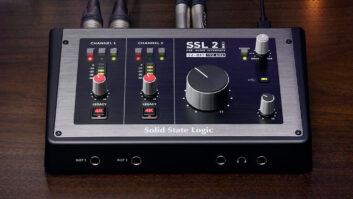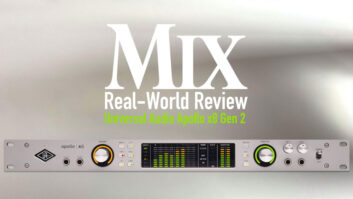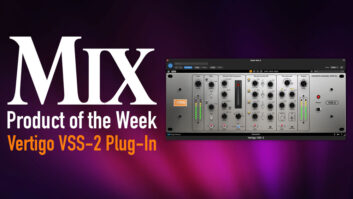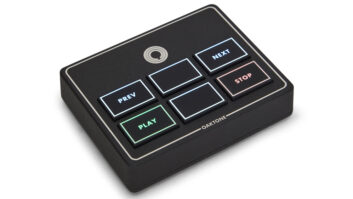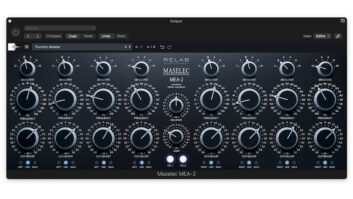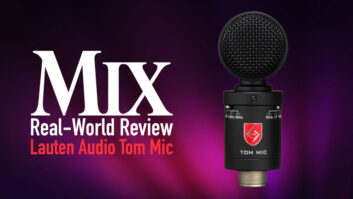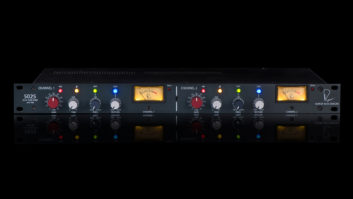As more and more products are manufactured by computer-automated tools, it’s always a breath of fresh air to review a product that has been built entirely (except for the etched circuit boards) and lovingly by hand.
Thermionic Culture’s Early Bird 2, from noted designer Vic Keary’s lab, has a foot firmly planted in two worlds: It’s a thoroughly clean, natural-sounding outboard preamp/EQ with specs more than suitable for digital recording, yet it has a vintage analog look, feel and sound that can warm up cold and sterile recordings. Its unique push-pull all-tube circuitry (transformer ins and outs) makes no compromises on sound quality.
FIRST IMPRESSIONS
The decidedly retro-looking front panel has plenty of useful features. Two mic or line inputs (both XLR) are available, with four toggle switches per channel: mic/line selector, 300 or 1,000-ohm termination (suggested by Neumann for FETs and sounds good with Shure SM58s), 48V phantom power on/off and an EQ in/out (active lift) switch. A five-step gain control selector works in 8dB gradations for either line or mic inputs (-24 to 16dB line).
A 3-band EQ rounds out the input stage: continuously variable low, mid and top (high) lift (boost) pots. Top is a shelving control that begins peaking at 9k when fully engaged; maximum boost is 21 dB. Mid frequencies provide a fairly broad peak of about 11 dB at 2.8 kHz. The bass (shelving) control provides 14 dB of boost at 50 Hz.
Completing the input section is another six-step control for bass cut (12 dB per octave) for flat, 30, 70, 150, 400 and 800 Hz. On the final two settings, it’s more of a shelving control, working as a mid-cut control with the active bass lift control.
Two analog output meters, a pair of phase-invert switches and L/R output trim pots complete the front panel, with a big, bright green power-indicator lamp and heavy-duty toggle on/off switch. The line-out controls are linear attenuators, operating after the electronics, so full output is available for pro level when set at max/full, or attenuated as needed for -10 systems. A pair of XLR line inputs are provided on the back, as is a standard detachable power cable socket.
A DEEPER LOOK INSIDE
A loose collar-nut on one of the input pots gave me a reason to pop the top, and what was inside was just as amazing — and thrilling — as the sound coming out of it. You’re not likely to see anything close to this kind of craftsmanship and build on another product of this type. As a reformed kit-builder, I was taken aback at the review unit’s care and attention to detail. (It’s been a long time since I’ve seen a “new” product look like this inside!)
EFFECTIVELY CLEAN OR DIRTY
Initially, I was looking for a clean, accurate stereo preamp for a Baroque chamber ensemble recording. I ran an AKG 426 stereo mic into the Early Bird 2 and tried both preamp settings, settling on the 300-ohm position. To my ears, the sound was fuller and warmer, without being overly bright as is sometimes the case with many “hot” preamps. Although Thermionic warns of a little bit of degradation at the top end when using 300 ohms, everything sounded great, bottom to top.
Imaging was just solid and beautiful; no surprises here. On a very small ensemble, I was able to use the Early Bird 2’s circuitry for an amazing amount of clean, uncolored gain — more than I’d probably ever need with this style of recording. Although it wasn’t used in the final recording, I also tried a Royer SF-12 ribbon on the ensemble with different, but nonetheless great results. Plenty of gain for use with a ribbon, and with the top EQ control, I dialed in a bit more detail, getting the best of both worlds, again choosing the 300-ohm setting.
In use with other small- and large-diaphragm condensers, the Early Bird 2 provides plenty of detail and lots of gain — more than I’m accustomed to with other so-called tube devices.
As mentioned, the separate line input makes the Early Bird 2 very useful as a tube EQ, providing some nice, warm distortion when pushed to extremes. The output trim control is placed post-electronics (similar to its previous incarnation, the Early Bird). Between these two settings, the Early Bird 2 can be overdriven to warm the coldest of tracks. Sure, it’s an old trick, but I love how the Early Bird 2 handles this feature, and I found plenty of uses for this, including on a breathy, up close male vocal track that was just too transparent and wasn’t going anywhere in a mix. A little crunch from the Early Bird 2 added the “pressed up and warm” sound I wanted; the vocal then sat fuller and thicker in the mix.
DOES IT CATCH THE WORM?
The beauty of this preamp is its no-nonsense, much-needed features, flexibility and clean gain structure (all the “straight wire with gain” you’ll probably ever need). On the downside, the Early Bird 2’s simple yet very effective EQ has no cut features, but then again, that’s not what it was designed to do. Its powerful, flexible tube design functions effortlessly, whether you’re pushing it hard or just asking for a lot of clean gain. This is definitely a contender for anyone searching for that preamp that goes above and beyond the ordinary. Price: $4,600.
Thermionic Culture (www.thermionicculture.com), dist. in the U.S. by AXI, www.axidistribution.com.
Joe Hannigan runs Western Sound & Video in Philadelphia.

